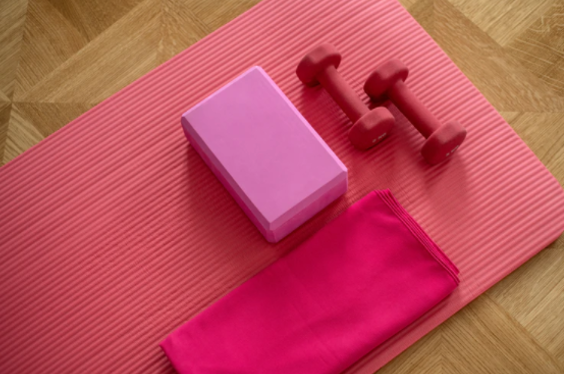Skip Ahead
Strength and Conditioning with PKU
Written by Cambrooke
6 minute read
Why Include Strength and Conditioning in my Exercise Regime?

Many of us may be aware that incorporating strength and conditioning into our fitness routines has many benefits and goes hand in hand with other types of training.
However some people assume the most effective fitness regime is only cardio activity (mainly running) and there is often miss-conception that strength exercises will make you ‘bulky’ and the stereotypical concept of body builders lifting weight in the gym.
It is important to understand that there are different types of strength and conditioning techniques for meeting specific goals or for general improvement / maintaining health and fitness.

Is strength training as effective as cardio?
Many studies have demonstrated that incorporating strength and conditioning programs within your physical activity regimes contributes greatly to optimising performance and fitness, whist decreasing the risk of injury and helping to prevent loss of lean muscle that comes naturally with ageing.
Of course cardio and aerobic exercises will help with fitness and maintaining healthy weight, but strength training does help too.

You may notice your fitness tracker shows a greater amount of calories burned going for a run than a strength / resistance session (depending on type and intensity of that session). Some assume this means they have worked harder and therefore this type of training alone is more effective.
Research suggests regular effective strength and resistance sessions contributes to longer period of calories burned and keeps your metabolism active post work out, longer than an aerobic activity (depending on type and intensities).This is due to improved muscle fitness increasing your resting metabolism.
However, it is important to understand that if your goal is for ‘shaping up’, don’t completely rely on weight but focus more on body composition. Remember muscle weighs heavier than fat and lean muscle provides a more ‘toned’ body composition despite weight.
If your goal is to become fitter, run further, improve stamina, or general overall improved fitness and energy, incorporating strength & resistance training into fitness programmes improves overall muscle fitness which noticeably improves aerobic and cardio fitness.
Are there other benefits of regular strength and conditioning exercises?

Yes, absolutely! Other important health benefits from Stregnth and Resistance training, include;
- Strengthens bones and improves muscular fitness – Muscle strength is crucial in making maintaining strength and energy to carry out everyday tasks.
- Facilitates healthy aging – Strength exercises are even more important as we get older to slow down the natural muscle lose that come with aging.
- Contributes to making aerobic exercise more productive – Stronger muscles result in greater posture, movement and stamina
- Improves heart health – Along with aerobic exercise, muscle-strengthening activities is proven to improve blood pressure by reducing hypertensionand lowers the risk of heart disease.
- Improves balance and prevents injuries – Improved muscle fitness supports posture, balance and movement.
… And of course, overall makes you look and feel better, including improving mood and the benefits of the ’feel good’ endorphins from exercise.
How can I fit a variety of regular strength & conditioning exercises into my fitness programmes or busy lifestyle?
There are various ways you can incorporate ‘Isotonic’ and ‘Isometric’ strength and conditioning type training into your regime or everyday tasks, whilst also ensuring correct form and technique for effectiveness and safety.
In case you are wondering the difference between these movements…
Isometric

Involves contracting your muscles against a non-moving object without a noticeable change of length and the joint doesn’t move.
Examples: Plank, Wall Sit and some Yoga poses.
Isotonic

Involves contracting your muscles through a range of motion, changing the length of the muscle through concentric or eccentric contractions.
Example: lifting a bicep curl, concentric (shortening muscle) to curl up, then eccentric to curl back down.
As lockdown restrictions are easing, allowing use of Gyms, swimming pools, sports facilities, exercising in groups and studio classes, for many, this is providing more opportunities for a more structured physical activity routine and motivation.
However, you definitely don’t need a gym membership or expensive weight machines to incorporate strength or resistance training to your routine, you have a lot of options, using weights, resistance bands, household objects body weight movements, or using your own body weight as resistance.
Examples;
- Squats
- Lunges (forward, backward, lateral etc)
- Glute Bridges
- Wall sits
- Push-ups
- Bicep curls, triceps dips, shoulder press, lateral raises etc.
- Planks
- Bear Crawl
(See previous blog post: ‘Looking after You and PKU – Exercise Benefits’ for more tips on this and check out Cambrooke’s ‘Thrive in 5’ booklet)
My Top Tips for Strength and Resistance Training with PKU
- All types of fitness ties in with a healthy and nutritious diet.
- Consuming the right nutrients and staying hydrated afteryou exercise is just as important as what you eat and drink before. Particularly carbs and protein after workout for efficient muscle repair and restoring glycogen.
- So carbs is pretty easy to tick off in the PKU diet
… however, many comment on how PKU patients are able to consume post-workout protein when following a low protein diet.
- Note that PKU prescribed supplements has protein in but minus the one type we can’t process, ‘Phenylalanine’. So the other proteins within our formula make up for the natural protein others would typically consume post-work out…
- …therefore, I find taking PKU supplement with a healthy snack and a drink to rehydrate within about 30 mins post work-out allows muscles that have broken down during the session to repair quicker and to refuel glycogen stores.
- Time PKU supplements and healthy meals / snacks throughout the day to allow for optimum energy and recovery.
- Experiment with what works for you and your fitness routines, you may find focusing on pre and post workout nutrition and timing of nutrition not only increases your energy, stamina, stregnth and performance, but may also noticeable reduce any DOMS (delayed onset of muscle soreness)…it does for me.
- Try to make time for rest days and good sleep – Although this can be difficult with hectic lifestyles, rest days are just as important when working out to allow muscles to rebuild and grow, replenish glycogen stores and help re-optimise the nervous system.
Plus of course you will feel more energised, refreshed to stick to your exercise routine.

In addition to the benefits of strength and conditioning mentioned above, incorporating the many different types of exercises keeps your fitness routines varied and fun.

Keep smiling, keep moving, stay active and enjoy!
Stay tuned for more…
Best Wishes Louise, PKU Fitness Instructor
Feel free to follow me on Social Media
Twitter: @loulamaris
Instagram: @pkulou





